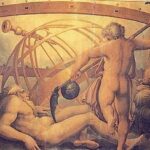Today Mexico ranks as the 13th largest economy in the world. Since 1995 the growth rate of the country economically has been 5.1%. Also the country faces the second largest disparity between the rich and the poor. Poverty rates have been growing in the last decade. Because of the economical and financial recession in the USA migration is down to levels of the XX century. The ruling party PAN lost the presidential election and now the PRI will be back to power. What does this mean for the common investor? Lets make a review of the Mexican profile.
Before the European arrival Mexico was inhabited by large and powerful cultures like the Maya, the Olmec, the Aztec, the Chichimec and the Tepehuanos among others. The cultural development of these cultures was strong and powerful. The Mayans were the first ones to use the zero and their calendar was as precise as any other calendar in the world of that era. The Aztec was the super power of the era dominating the center of Mexico.
When the Spanish arrived to America they found a decadent Aztec Empire and they started the military conquest of the capital Tenochtitlan. Spain become a superpower after the “Reconquista” of Granada (1492). The wealth that America was going to provide thanks to its silver and gold mines increased the Empires power to wage war in Europe. The Spanish “Heroic” Generation with their “Nomad” commanders and “Prophet” Leaders eventually took over the world to become the first global empire of history. Remember the phrase “In the Spanish Empire the sun never sets”. During three hundred years the territory was considered the “New Spain” (1542 – 1821).
When the War of Independence began Span was in a “Crisis” era (1823 – 1825) because of the Napoleonic Invasions. The post independence or “High” era (1826 – 1852) was frustrated because of the loss of territory to the USA and internal divisions between liberal and conservative forces. When the “Awakening” era (1853 – 1881) arrived the country again collided in civil war this time between Catholics and Liberals. This “Awakening” era is called the “Reforma”. Finally during the “Unraveling” era (1882 – 1911) Porfirio Diaz became President and 30 years of economical and political peace arrived.
But after Porfirio Diaz left and the “Crisis” era (1912 – 1938) arrived Civil War erupted again. This Civil War called “The Revolution” destroyed the country and eventually created another type of dictatorship: The PRI party. When the High era (1939 – 1959) arrived again the country was able to develop economically to levels of 6% annually. This economical growth was thanks to agricultural lands mainly. Industrial development kept slow and inefficient. During the “Awakening” era (1960 – 1982) the Institutions of the “Revolution” were challenged and from then on, until 1997, democracy arrived to Mexico.
During the “Unraveling” era (1983 – 2003) Mexico saw president Carlos Salinas de Gortari (Prophet Archetype b. 1948) became President. He took the country to a new economical level when he signed the NAFTA agreement with Canada and The United States. With the “Neo liberal” perspective now in motion Mexico started its economical transformation to an economy of services. It sounded good but the 1995 crisis left the people with a sense of bad economical decisions. The recuperation was fast and eventually the economy started to grow again. In 2000 president Vicente Fox from the PAN took over office after 70 years of PRI Presidents. Today Mexico has 12 free trade agreements with 44 countries (Including the European Union and the North Triangle among others).
As an investor you will find that Mexico is a very good place to invest. Foreign debt is at 20% of GNP and stability is a common concept in Mexican Macro-economics. According to Goldman Sachs the Mexican economy will be the 5th largest economy in the year 2050 and it is expected to grow faster during this decade. Also in 2010 Mexico surpassed France to become the 9th largest US debt holder. Also Mexico is the largest Auto producer in America. General Motors, Ford, Chrysler, Nissan, Volkswagen and Dina have make strong investments in infrastructure to build cars and trucks. Mexico is also one of the largest producers of smart phones in the world. Also Mexico surpassed recently South Korea to become the second largest TV producer.
Mexican industry is also strong and international. Companies like CEMEX, Alfa, FEMSA, Televisa, Azteca, Banorte, Banamex, Grupo Bimbo, Grupo Modelo, Grumma, Telmex and America Movil are some of the most important Mexican companies listed in the IPC (Mexican Stock Exchange). America Movil and Telmex belong to the richest man in the world: Carlos Slim Helu (Prophet Archetype b. 1940). Femsa and Grupo Modelo produce famous alcoholic beverages like the “Tecate” and “Corona” Beer. Grupo Bimbo takes bread to every corner of the Mexican Territory. In this last decade the IPC went from 4,000 to 36,000 points, that’s a 900% return in profits.
Mexican people have unique characteristics. You will find out that Mexico is a country that is very family oriented. The Mother receives a very high level of admiration and love. The most iconic symbol of Mexico is the “Our Lady of Guadalupe”. The mother is perceived as a martyr, mentor and as someone who gives all for its children. There is a traumatic past in the family: the Spanish father who raped the American women and the Mexican Mestizo was born. Also the Mexican, contrary to popular thought, is a very hard working person who values resistance. Being strong and resistance is a most for the Mexican culture. He who is not resistant is weak and is excluded.
Challenges are also important in Mexico’s agenda as we enter the second decade of the XXI century. Corruption is still a major problem in the political structure. Crime has surged in some regions of the country very violently. Education still needs reforms that guarantee that all Mexican kids get appropriated knowledge to compete with the world. Of the Federal Budget the largest amount of resources is sent to educate the young millennial generation (1983 – 2003).
You, as an investor will find that Mexico is the right place to make your money grow. Challenges and opportunities are always important to consider but the facts are there and Mexico is moving to a new place in the economical world that will mean more creation of wealth. In your portfolio Mexico means profits.
Writen by Edwin Carcaño Guerra on September 9th 2012 and re launched in 2017 with new data. If you need more information about Mexico please contact me: edwin@ecarcanog.com





GIPHY App Key not set. Please check settings